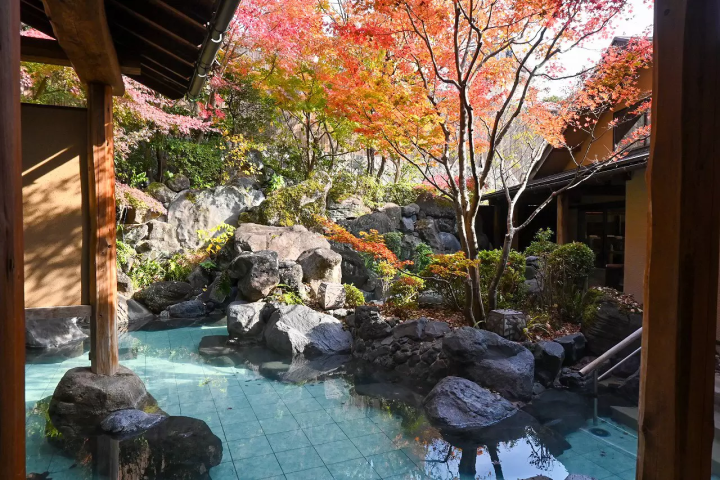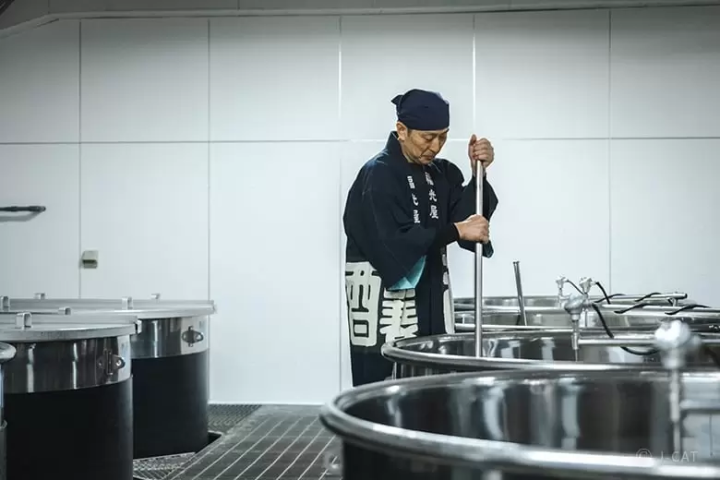The Beauty Of Kusatsu Onsen In Winter: Snowflakes And Hot Springs

Kusatsu Onsen in Gunma prefecture is one of the best quality hot spring resorts in Japan. When winter comes, the snow covers the houses creating an amazing landscape. Visit Kusatsu Onsen and get warm in its wonderful hot springs!
Tokyo and Osaka are the most popular travel destinations among international travelers. But how about considering Kusatsu Onsen (Kusatsu hot spring resort) in Gunma prefecture if you wish to visit other places in Japan? Along with Arima Onsen in Hyogo prefecture and Gero Onsen in Gifu prefecture, Kusatsu Onsen ranks as one of the three highest-quality hot springs that are loved also by the Japanese.
In winter, snow fall in Kusatsu. Travelers visit Kusatsu Onsen resort to view the landscape with snow, while soaking in a hot spring to get rid of their fatigue.
A Street Looking Just Like a Painting

In Kusatsu, in addition to hot spring resorts, Japanese-style houses and stores are found along a beautifully paved street which makes you feel amazing just by walking along it.
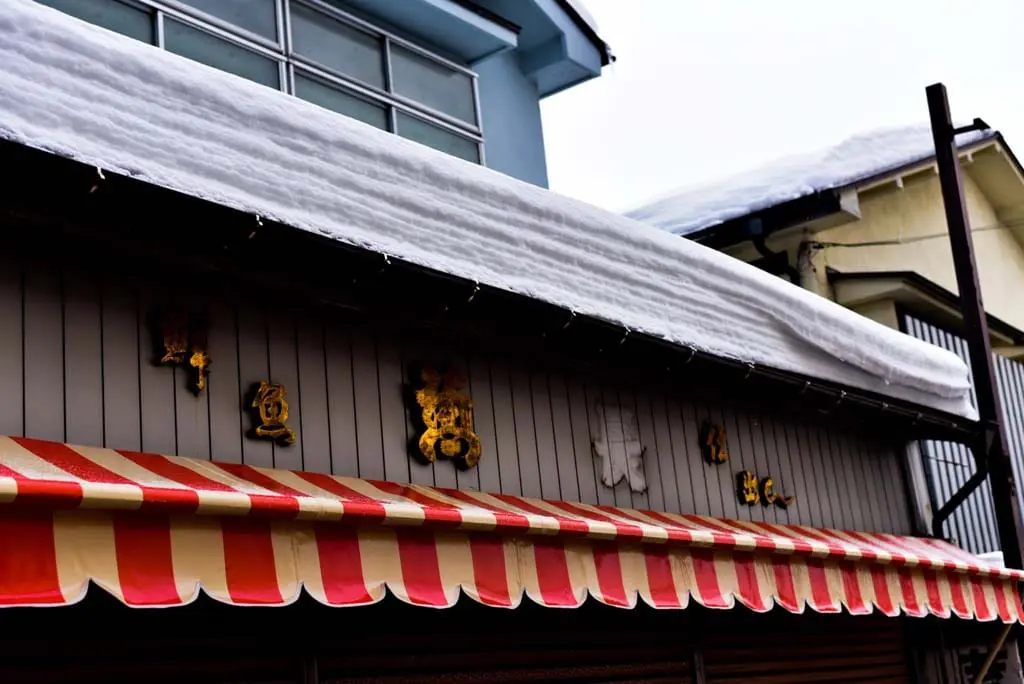
Many thin layers of light snow are piled up like mille-feuille, covering the roofs.
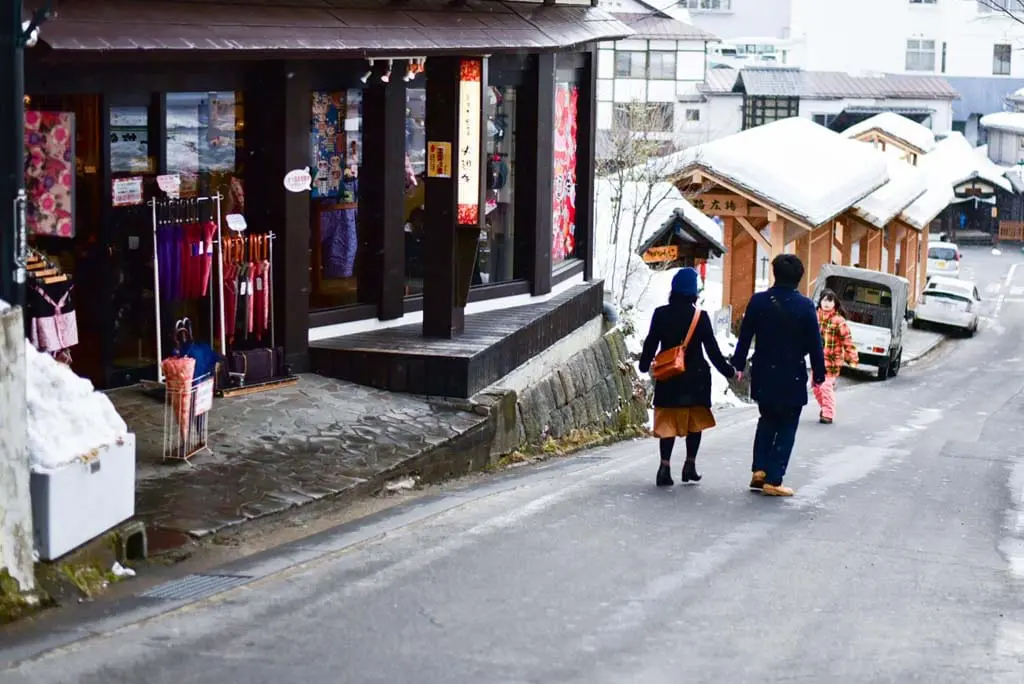
Although the day when we visited was sunny, we got to see one of the unique landscapes of Kusatsu, namely the “mille-feuille houses“ as there were some snow left on the roofs.
Yubatake - Snow Landscapes and Hot Springs
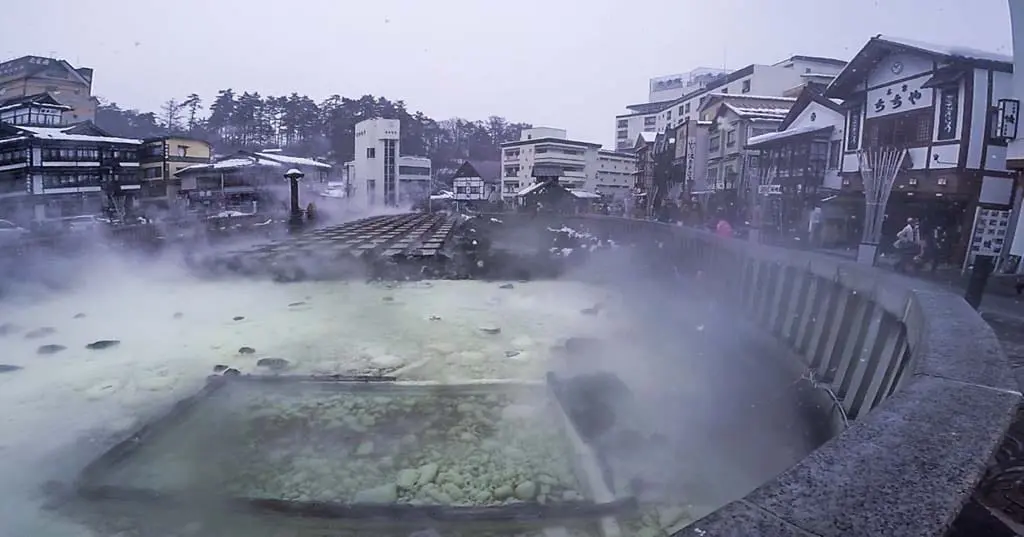
When speaking of Kusatsu, everybody first thinks of Yubatake. Yubatake is located in the center of Kusatsu onsen. 4,000 litters of hot water comes from this source per minute. There are many souvenir stores available around Yubatake, an area which is always full of travelers.
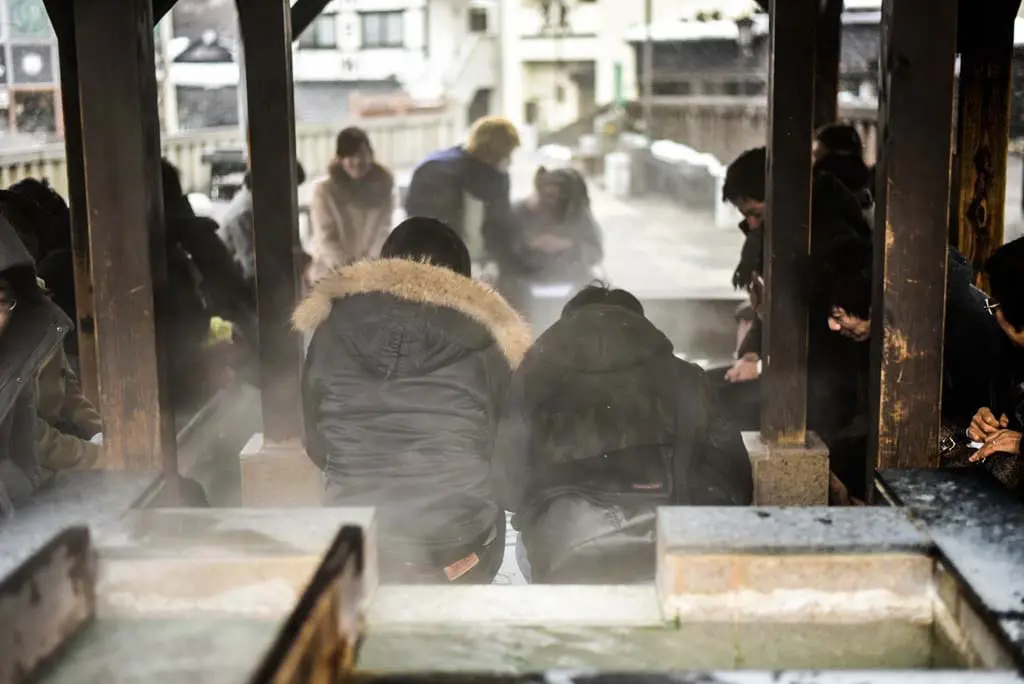
In the center of Kusatsu Onsen, there are free foot baths. They help getting you warm up immediately, no matter how cold it is outside.
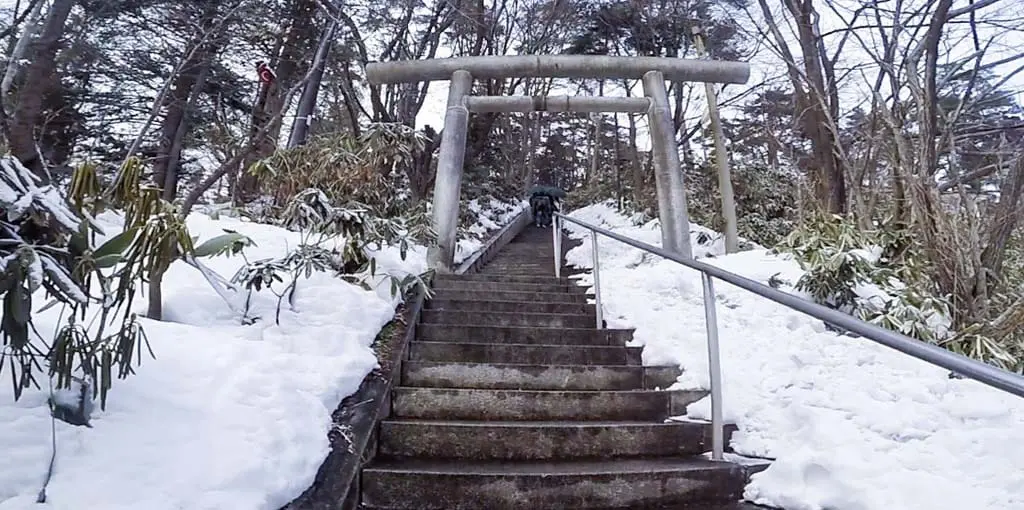
If the weather is good, how about walking around Yubatake? After strolling around Yubatake, we also walked to Shirane Shrine, which is located nearby.
Shirane Shrine - Enter Another World
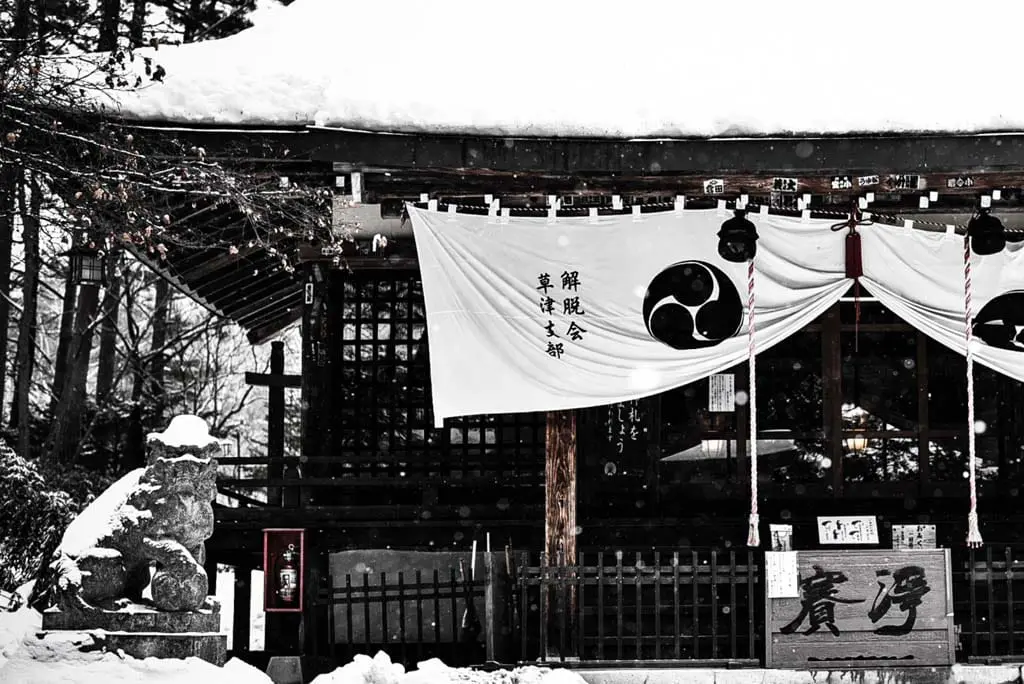
It is believed among locals that Kusatsu Onsen was founded by Yamato Takeru, the legendary price who appears in Japanese mythology.

Loctaed in the heart of a grove, Shirane Shrine is dedicated to Yamato Takeru. The contrast between the trees standing strong against the cold and the white ground is stunning. Moreover, this place is the home of photinia, a plant whose pink flowers bloom at the beginning of May every year. On July 17th and 18th, a festival is held at Shirane Shrine, where the participants carry portable shrines around the town.
FAQ
Can you do onsen in winter?
Winter is a wonderful time to indulge in the tranquil and healing experience of onsen, Japanese hot springs. The warmth of the mineral-rich waters offers a comforting escape from the cold winter temperatures, providing relaxation and rejuvenation. The snowy landscapes surrounding many onsen locations add a picturesque charm to the experience, enhancing the serene ambiance of the baths. Onsen in winter not only offer health benefits like improved circulation and muscle relaxation but also present a unique opportunity to immerse yourself in nature while enjoying the soothing properties of the hot springs. Whether relaxing in an outdoor bath amid snowy scenery or partaking in seasonal activities and events, visiting onsen in winter presents a delightful blend of comfort, tranquility, and seasonal charm for a memorable and rejuvenating experience.
Is Kusatsu Onsen worth visiting?
Kusatsu Onsen stands out as a highly recommended destination offering a blend of authentic Japanese hot spring experiences, picturesque surroundings, and cultural richness that make it worth visiting. Renowned for its high-quality sulfuric hot springs, Kusatsu provides a therapeutic bathing experience with mineral-rich waters known for their health benefits. Nestled in the scenic mountains of Gunma Prefecture, the town offers a tranquil and traditional ambiance, allowing visitors to unwind amidst stunning natural landscapes. Cultural immersion opportunities abound, from exploring historic streets to savoring local delicacies, enriching the overall experience. Outdoor activities like hiking and exploring the mountains complement the relaxation in the hot springs, while the town's authenticity and historical significance ensure a genuine and rejuvenating onsen experience in a serene and picturesque setting. Kusatsu Onsen's unique blend of relaxation, cultural immersion, and natural beauty make it a standout destination for those seeking an enriching and revitalizing stay in Japan.
What temperature is the water in Kusatsu?
The water temperature in Kusatsu Onsen typically ranges from about 50 to 60 degrees Celsius (122 to 140 degrees Fahrenheit). These hot spring waters in Kusatsu are renowned for their high temperatures and mineral-rich composition, believed to offer various health benefits and therapeutic properties to bathers. Kusatsu Onsen is known for its hot and potent sulfuric waters, making it a popular destination for those seeking a rejuvenating and healthful soak in the healing and mineral-rich hot springs.
How much time to spend in Kusatsu?
The optimal duration to spend in Kusatsu can vary based on individual preferences and the desired level of relaxation and exploration. A day trip offers a brief introduction to the town's hot springs, culture, and natural beauty, providing a taste of the healing waters and local charm. For a more immersive experience, an overnight stay allows for full relaxation in the hot springs, leisurely exploration of the town's attractions, and potentially some outdoor activities. Extending the visit to two to three days provides a deeper dive into Kusatsu's onsen culture, culinary delights, and nearby sights, ensuring a comprehensive and fulfilling stay. Those seeking a longer retreat or a more thorough exploration can opt for an extended stay of four days or more to indulge in further relaxation, in-depth exploration of the region, and a leisurely pace to fully enjoy the hot springs and surrounding attractions. Customizing the visit based on personal preferences allows visitors to tailor their time in Kusatsu for a rejuvenating and memorable experience in this picturesque hot spring town.
Do people wear clothes in onsen?
In traditional Japanese onsen, it is customary and expected for bathers to bathe completely naked without clothing or swimsuits. This practice is rooted in cultural traditions and hygiene considerations, aiming to maintain the purity and cleanliness of the mineral-rich hot spring waters. Bathing nude is viewed as a form of humility, equality, and respect for tradition, ensuring that everyone can enjoy the therapeutic benefits of the hot springs on equal footing. By adhering to these customs and cultural norms, bathers can fully immerse themselves in the relaxing and rejuvenating experience of onsen, promoting cleanliness, comfort, and a deep appreciation for Japanese spa culture.
Who should avoid onsen?
While onsen (hot springs) are generally safe and beneficial for most individuals, certain groups should take precautions or avoid hot springs altogether. Pregnant women, particularly in the first trimester, should consult a healthcare provider before using hot springs due to potential risks to the fetus. Individuals with cardiovascular conditions, skin sensitivities, certain medical conditions like diabetes or neurological disorders, and those prone to overheating should exercise caution and seek medical advice before entering hot springs to prevent potential health complications. Additionally, individuals under the influence of alcohol should avoid hot springs to prevent dehydration and other risks associated with the combination of alcohol and heat. Prior consultation with a healthcare provider is recommended for those in these groups to ensure safe enjoyment of hot springs when considering individual health considerations.
Basic Information about Kusatsu Onsen
In Japan, the substances contained by the hot spring water vary from place to place. Kusatsu Onsen has the highest output of healing hot spring water in the world. Its pH value is 2.1, which means it has an outstanding bactericidal component.
As there are only 200 kilometers between Tokyo and Kusatsu, you can reach JR Naganohara-Kusatsuguchi Station in about two and a half hours if you take a limited express train from Ueno Station. You will get to the Kusatsu Onsen bus stop in about 25 minutes after taking a bus departing from the train station.
Please take care not to buy a wrong bus ticket when taking the bus at Naganohara-Kusatsuguchi station. We highly recommend you check how to travel there in advance.
Information
Kusatsu Onsen
Address: Gunma, Agatsuma district, Kusatsu-machi, Kusatsu 3-9
Hours: -
Closed: -
Wi-Fi: -
Credit Cards:-
Other Languages: -
Menus/Pamphlets in Other Languages: -
Nearest Station: Kusatsu Onsen bus stop
Access: 25 minute bus ride from JR Naganohara-Kusatsuguchi Station
Price Range/Entrance Fee: -
Religious Considerations: -
Phone Number: +81-279-88-0800
Website/Homepage: Kusatsu Onsen Tourism Association
Read also
This is the official account of MATCHA's editorial department. Our articles feature useful travel information for visitors to Japan, from how-to guides to recommended places to visit.










































![[Coupons available] We're open even during the New Year holidays! We'll bring you information on our New Year's sale!](https://resources.matcha-jp.com/resize/720x2000/2025/12/26-254137.webp)
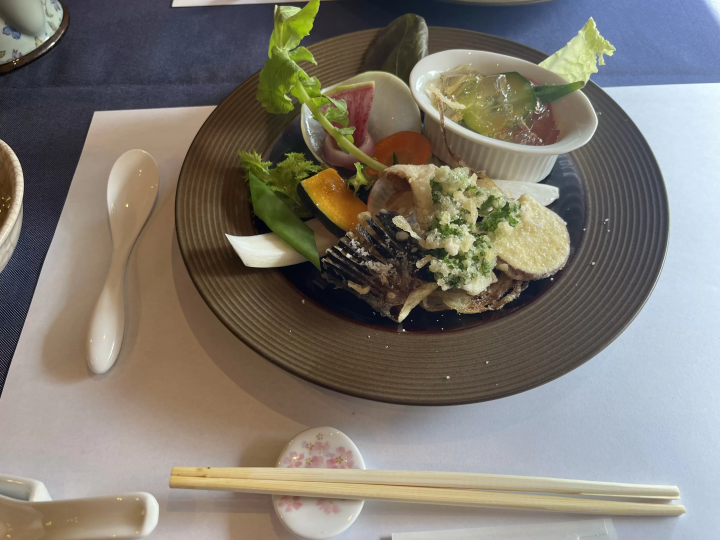
![[For beginners and debutants] Special feature on recommended ski resorts and ski tours!](https://resources.matcha-jp.com/resize/720x2000/2025/12/26-254120.webp)
